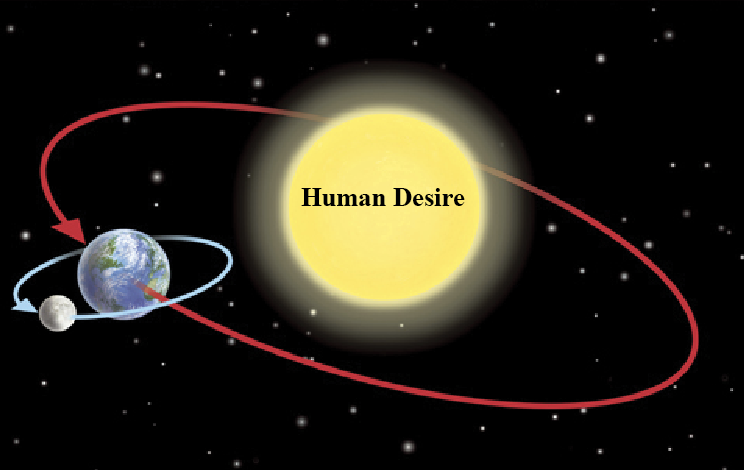The Exclusivity of Inclusive Design
Posted on October 26, 2018
Inclusive design has been specified as “a process whereby designers and manufacturers ensure that their products and services address the needs of the widest possible audience.[1]” However, by this aim of inclusive design as in service of the widest possible audience, it inherently reflects the assumption that design is for human actors and spectators. Through this exclusionary limitation, we begin to see the anthropocentric nature of many ‘good’ design practices. If inclusion means not excluding any section or party involved in something, then as design artifacts and systems are created and put out in the world, we use terms such as inclusive, universal or participatory design if natural systems are ignored?
Architect William McDonough in collaboration with chemist Michael Braungart touch on the origins of the ironic and unintentionally deceptive nature visible in the term ‘inclusive design’ and terms like it by tracing back to the Industrial Revolution. The authors explain that many of the problematic models “…underlying the design assumptions of the Industrial Revolution [were] not called into question,” so that “…even moments that were formed ostensibly in opposition to that era manifest its flaws.[2]” Many of the corrections to the problematic model of Industrial Revolution era design such as the single-use nature of products, cradle-to-grave, and design catered to a certain person not all persons, were, when pushed back on, still having to operate in the constraints set up by the original system[3]. For example, inclusive design as a better design approach is still engrained in the human lens established by the Industrial Revolution. It was a design movement doomed from its conception to live in an anthropocentric state.
Why does this matter?
Anthropocentric design practices might be servicing people better or more equitably, but they are often creating products that are isolated from the particulars of place and space. Because of this assumption that nature should be overwhelmed, and human given priority has been established. What is often ignored or given little attention is that natural energy and natural systems and cycles can be harnessed to maximize efficiency and improve the products and function of design even as it is tailored to humans.
Enter Donna Haraway…
Designing with nature isn’t a novel idea, just an unpopular and undervalued one. History of Consciousness scholar Donna Haraway has written on it extensively in her book Staying with Trouble. For Haraway, the task for all humans is to “make kin in lines of inventive connection as a practice of learning to live and die well with each other in a thick present” by engaging with each other in the sf (string figure), which is, in Haraway’s words, “practice and process; it is becoming-with each other in surprising relays; it is a figure for ongoingness in the Chthulucene.”[1] The ‘Chthulucene’ refers to a made-up word: Chthonic ones which are described as monstrous and meaningful systems of the natural world.[2] Haraway is thereby raising a creative call to action to create things for the human world that bring in the natural world and thereby making the two within each other in a novel and unexpected way. What this level of thought would look like in application on current inclusive design metrics such as this:

Adaptation of the Inclusive Design Cube (IDC) metric created by John Clarkson and Simeon Keates in their journal article, “Design Exclusion” (2013)
In which there is another layer beyond mass culture which would be natural world i.e. fully situating the design or product in a truer state of being. The answer to this in a new design metric that allows nature and natural systems to work with design will move away from efficiency by force and towards efficiency through unanimity on a level never before tapped into! We need to engage in sympoiesis[3]—making with—but even go beyond making with other living being and start making with natural systems and cycles.
Is human-centered design ruining the world?
With all the creative good they do, it is easy to elevate organizations such as IDEO to the model of best design practice. The About IDEO page posts hosts values saying including the importance of human centered design and how emerging technology can and should be used to answer human needs among many others. Harraway’s introduction of Chthulucene and the common belief that “technology will somehow come to the rescue of its naughty but very clever children…”[4] have colored these values seem less liberating and positive as I had once believed them to be. Through Haraway my eyes were opened, and I have been able to take off my rose-colored glasses and take ownership, pride and comfort in this new guiding philosophy.
-CRC
[1] Haraway, Donna J.. 2016. Staying with the Trouble: Making Kin in the Chthulucene. North Carolina: Duke University Press. Accessed October 26, 2018. ProQuest Ebook Central.
[2] Ibid.
[3] Ibid.
[4] Ibid.
[1] John Clarkson and Simeon Keates, “Design Exclusion,” Chapter 5 in Inclusive Design: Design for
the Whole Population, Cambridge University, 2013
[2] McDonough, William, and Michael Braungart. Cradle to Cradle: Remaking the Way We Make Things ;. Vol. Page 29. London: Vintage, 2009.
[3] Ibid.